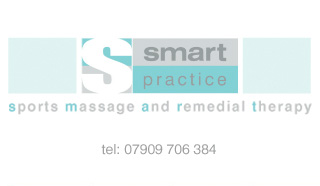
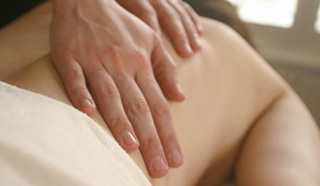
Sports massage
Sports massage
Sports Massage can benefit anyone, not just those involved in sport. Sports Massage is so-called simply because it is a form of remedial massage and soft tissue therapy favoured by sports people for preventing and treating sports related injuries and enhancing performance. At Smart Practice we understand that many people who do sport today are not striving to be elite athletes, instead they do it as part of a healthy lifestyle.
Many athletes, regularly training and competing, know that a complete training programme should also include the correct nutrition, directive strength & conditioning and recovery which can include regular Sports Massage. Because each sport uses muscle groups in different ways, a qualified sports massage practitioner will have a sound knowledge of the muscular and skeletal systems, and tailor the treatment for each individual athlete.
Sports Massage is invaluable to sports people during training and competition. Pre-event massage warms up and stimulates the muscles in preparation for the work ahead and can also have accompanying positive psychological effects. Post-event massage is important in helping sore muscles to detoxify, stretch, re-align and heal in readiness which speeds up recovery and reduces injury-rate.
Just as sports people work hard in training and competing, many prople are also working very hard at their jobs, looking after the house and garden, and caring for families. Our bodies are put under similar stresses and strains resulting in back pain, joint pain, work-related injuries and postural problems. Sports Massage results in pain reduction, improves the condition of muscles and joints, and promotes health.
Sports Massage is beneficial whatever your level of involvement in sport or activity
The primary aim of Sports Massage is to restore and maintain full function to muscles and other soft tissues (joints, fascia, tendons and ligaments). This can simply mean easing the tension that has built up in your shoulders over long hours in the office, or restoring maximum performance to an over-trained muscle group in an athlete.
It is an effective, non-invasive treatment that works to relieve specific pain and tension from sore, tight muscles. Techniques focus on the deeper layers of the muscles, breaking down muscle 'knots', assisting the circulation and encouraging the natural repair process. The beneficial effects on health come from the impact of this treatment physically, biologically and psychologically:
Directed stretches are applied to restore flexibility and mobility to muscles and joints, and to prevent the build up of muscular tension which occurs through excessive or repeated use, injury and postural strain.
Massage stimulates the micro-circulation via the pressure provided by massage strokes through local areas of the body. The effect helps to flush any muscle waste out and introduce fresh nutrient-filled blood. This is particularly important in post-exercise recovery to reduce muscle soreness and aid recovery, post-injury to promote healing, and when tense muscles ache and feel tired because of sluggish circulation and toxic build up. Overall, it heps to maintain or improve the health of the tissues. Massage also also improves the flow of lymph and aids lymphatic drainage thus removing excessive tissue fluid and filtering out toxins which can accumulate following intense activity, injury or in certain medical conditions.
Following injury, surgery or certain disease processes scar tissue forms. The formation of scar tissue can be prevented or reduced by specific massage techniques which mobilise the area and aid the healing process. This can help to treat the 'hard lumps' and 'knots' that are often felt in muscles. Functional recovery of the structure is optimised and re-injury prevented.
The effects on the nervous system are varied and numerous. Sports Massage not only relieves tension from individual muscle groups but it also has the effect of releasing tension, both physical and emotional, throughout the body. This accounts not only for some of the pain reducing effects but also for the feeling of relaxation. It also positively affects certain medical conditions such as stress and anxiety, migraines, high blood pressure and fibromyalgia.
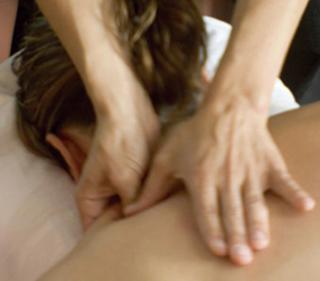
Remedial massage therapy
Remedial massage therapy
Remedial Massage Therapy is an all encompassing form of therapeutic massage, which incorporates 'Sports Massage' and both forms employ specilaised techniques including:
Neuromuscular Technique and Trigger-Point Therapy, Soft Tissue Release, Positional Release Technique, Fascial Release and Muscle Energy Technique.
'Remedial' literally means to 'restore to health' which is the aim of this treatment. An assessment is made of the musculoskeletal system, the problem areas are examined and postural imbalances are identified. The techniques are then applied in a prescriptive manner according to an individuals needs.
Trigger points are focal areas within muscles that are held in spasm and over time result in tight, hard bands that can be painful. They can occur in anyone and have many causes e.g. poor posture, inadequate nutrtion, over-use, under-use and injury. De-activation of these tender pointscan be done through specific massage methods, as well as acupuncture. This is followed by stretching the muscle to restore length and function, and ultimately maintain the achieved pain reduction. Predisposing factors are also addressed to prevent recurrence of trigger points.
Soft tissues are 'relaxed & released' via the influence on the body's nervous system in a way that cannot be achieved by self-stretching thus increasing mobility and flexibility. This is particularly useful in sports people but also in those that have arthritis, whiplash injury, sciatica or poor posture. Various stretching techniques can be applied to gain the required muscular release and individuals are encouraged to carry out a regular stretching programme at home to maintain the results.
Fascia is a soft tissue that forms a fibrous, 'stocking' like structure which contains and envelops all the elements of our body including the muscles, tendons, ligaments, joint capsules and organs. It is able to adapt itself to mould us into particular patterns that we create through bodily movements or restrictions. It can become damaged, thickened and scarred in a similar way to muscle, with similar causes (i.e. injury, surgery, poor posture, stress). The changes happen over time with the fascia becoming less mobile and starved of good nutrition. This can result in fascial pain and restriction which in turn can effect adjacent structures such as muscles and joints. It can also explain why there can be links between organ dysfunction and musculoskeletal pain. Fascial release therpay aims to differentiate, mobilise and lengthen these soft tissues in order to ease pain, restore function and faciliate movement.
Sports and Remedial massage therapy is ‘holistic’ having numerous beneficial effects which can meet your varying needs, influencing not only the musculoskeletal but several systems of the body.
Did you know that headaches and neck pain are most commonly caused by tense muscles in the head and neck region?
Responses to poor posture, stress or injury can result in tightening of the muscles and is particularly seen around the neck and shoulders, and the upper back is held stiff and tight. This can result in tension headaches, back, neck and shoulder pain. This treatment enables patients to adopt better neck posture, increase range of movement and release tension headaches. Even the pain severity and duration of migraines can be reduced.
Acupuncture
Acupuncture
Western Medical Acupuncture has evolved from Chinese acupuncture by employing the current principles of modern, evidence-based medicine. It has been shown to be an effective, safe, gentle, drug-free approach to treating acute and chronic musculoskeletal pain, including myofascial trigger point pain.
The practitioners at Smart Practice are trained in acupuncture and specialise in using it as a treatment modality for musculoskeletal disorders and injury. Assessment as to the appropriateness of acupuncture is made and full consent obtained prior to using acupuncture as part of your ‘holistic’ treatment
Acupuncture can be included in your treatment at no additional charge.
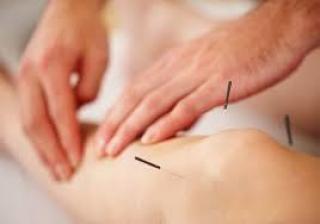
Pregnancy massage
Pregnancy massage
Pregnancy Massage has been identified as being very beneficial to women, particularly in the latter stages of pregnancy. If the client is in her 2nd or 3rd trimester and is experiencing a low-risk, uncomplicated pregnancy then gentle massage may be offered on the basis that she has consent from her midwife or GP.
Pregnancy can be one of the most exciting and fulfilling times in a woman’s life bringing tremendous feelings of joy, anticipation and contentment. But, it is also a time of great physical and emotional upheaval. Together with the ever important trio of rest, good diet and exercise, massage can play an important role in helping a woman cope with the physical and emotional demands of nine months of pregnancy.
Massage has also been reported to be helpful in labour. Gentle massage can be performed by a partner over the lower back, lower abdomen or wherever the contractions are felt. Soothing, circular stroking over these areas are a preferred drug-free pain relieving method in some women, and are found to be particularly useful in the early stages of labour.
Massage continues to be of great benefit in the post-natal period to help combat the stresses that are placed on the body during pregnancy, labour and caring for young children.
The senior practitioner has undertaken specialist training in pregnancy massage and utilises gentle, safe massage movements to help relieve many of the stresses and discomforts of pregnancy, and the back massage is particularly welcoming!
There are several observed or identified benefits to massage therapy during pregnancy including:
It helps to combat aches and pains - Often situated in the lower back, hip area, shoulders and neck and caused by muscular tension, altered posture and overstretched ligaments. It also helps to alleviate the tendency to cramp, especially in the calf muscles. It can address problems such as sciatica and pelvic pain.
Enhances body awareness - For better posture and less discomfort
Improves circulation - This helps to prevent varicose veins, thread veins and haemorrhoids
Stimulates the lymphatic system - It promotes the elimination of waste products and toxins from the body and helps to combat the tendency towards fluid retention
Uplifting and revitalising - It improves the flow of energy, induces a general feeling of well-being and minimises fatigue. It can help to boost self esteem when the physical changes become a little overwhelming
Prepares the body for childbirth - By keeping your whole body relaxed and in harmony, and by releiving tension in the muscles involved in labour
Relaxing - The therapeutic effect of massage includes physical and mental relaxation, thus easing anxiety and stress during this time of transition
It gives emotional support and nurturance
Improves skin tone - Massage maintains the skins suppleness and elasticity and can help to prevent stretch marks
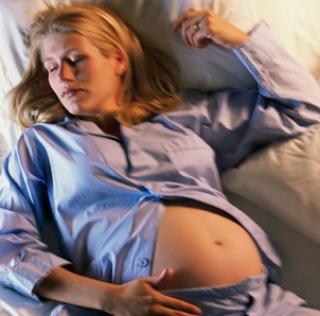
Relaxation massage
Relaxation massage
Relaxation Massage is a treatment that uses the same techniques as Sports Massage and Remedial Therapy but without necessarily being directed towards treating a specific problem, therefore the massage maybe more general. There are a number of reasons why a deeply relaxing massage could be beneficial element in your treatment. The result is release of tension throughout the body which ultimately relaxes and de-stresses and gives a wonderful sense of well-being. The session is tailored to you, simply explain how you feel and what you need.
You may be someone who is always busy with no time for yourself to relax and unwind. Or, work is leaving you tired and tense at the end of the day. Perhaps you are suffering from stress, feeling anxious or having difficulty sleeping.
Most people spend much of their time worrying about other people or pre-occupied by 'life's tasks' - earning a living, rushing to exercise at the gym, housework etc.
How often do you stop and allow yourself to consciously 'let go' & unwind?
How often do you allow yourself to totally relax and nurture both body & mind?
We all need to stop occasionally, put ourselves first and recharge the batteries.
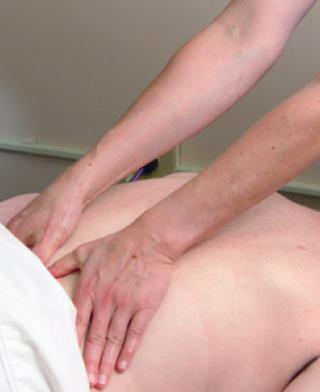
It is important to remember that health is more than the absence of illness...it is the presence of energy, well-being and relaxation.
Designed and created by it'seeze